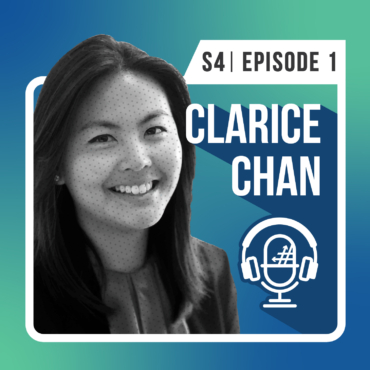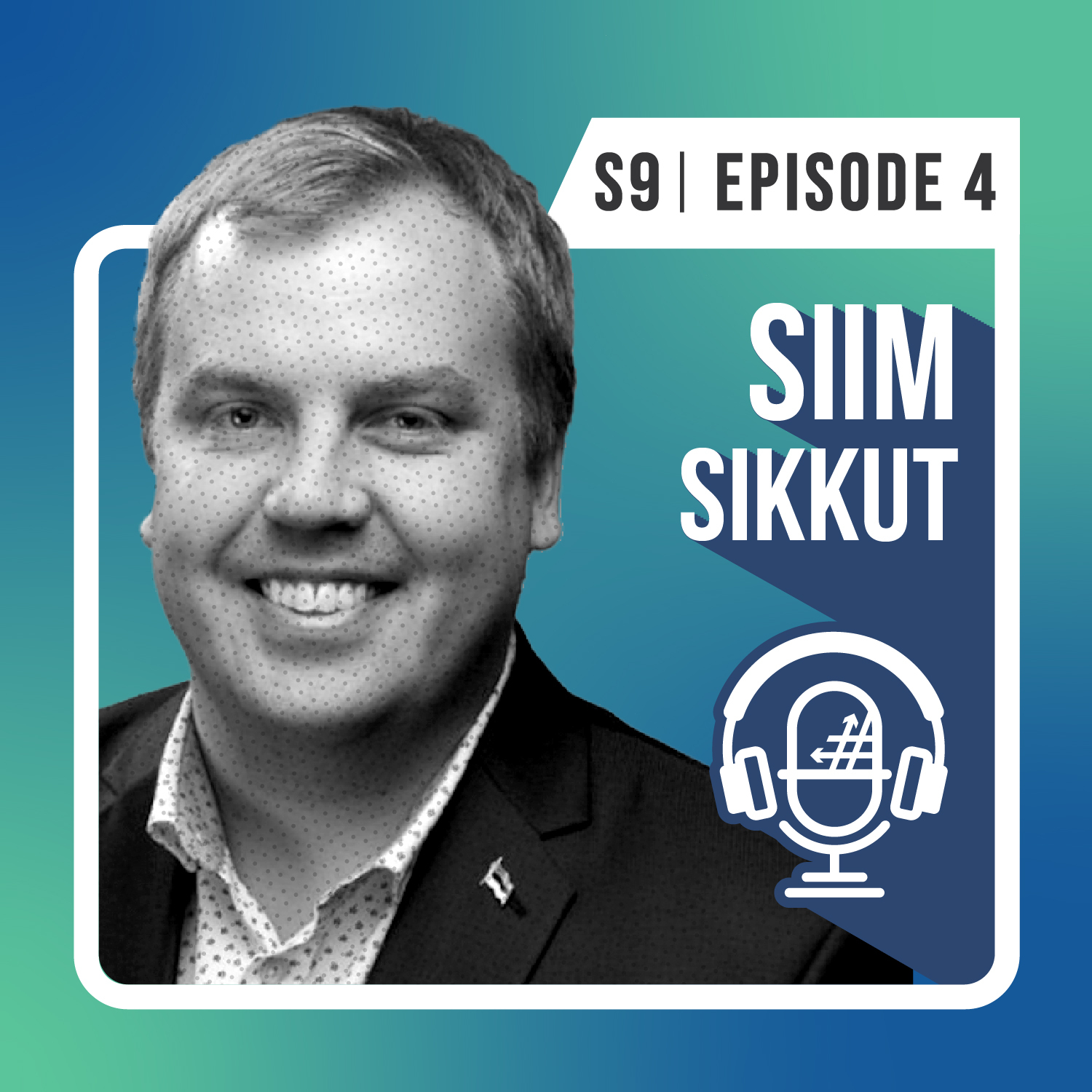S4 E1: Service Design at Department of Veterans Affairs with Clarice Chan

In today’s podcast, we look at the journey of a technologist in innovating the service design in the government.
With our guest, Clarice Chan, Project Manager at Microsoft and Presidential Innovation Fellow at the Department of Veterans Affairs, we will unpack the inner workings of the government machine and discuss the importance of shifting mindsets to transform and innovate processes to better serve the constituents.
Let’s find out why people are always the center of transformation.
In this episode:
Her story
I think every story starts with your roots and what motivates you. For me, a lot of this was really cultivated in my upbringing in Hong Kong. I spent most of my formative schooling in Hong Kong, and growing up in a dynamic international city, I was just inspired by the growth of innovation, the impact that design has on our daily lives, and what it means to design a modern society. And that thread and culture are what have guided my career and my life the entire time.
So I started off pursuing design. Then as I got more technical in my design, I realized the power of technology itself, not just in enabling the stories we tell, but literally enabling the tools and the capability of people in humanity. And so I became a technologist, joined Microsoft as a product manager, and then found my path to government. The journey was really about honing my crafts and skills, then finding where and what my calling is. So that’s how my genesis of growing up in Hong Kong, having these values of society and scale, really then translated to wanting to serve as a Presidential Innovation Fellow.
The transition from Microsoft to Presidential Innovation Fellow
I had always taken a liking to government and politics and what it would mean to serve your country and to pay it forward. But when you look at government and the political landscape, you think to yourself, “Unless I’m trying to be a lawyer or a politician, I’m not sure that there’s a place for me in government.” But despite that, I was hoping to find my place and what my role could be.
At Microsoft and in the PM discipline, we always think about product-market fit. So when I thought about that through the lens of my own personal career, I thought to myself, “Based on my skills, am I living my own best product-market fit? Where are my ingenuity, creativity, and talents most needed?” So when I learned about the Presidential Innovation Fellow program, I tracked it, and that’s where I found my way to government.
Fixing the “career in government” dialogue
I think it goes without saying that we all feel like our government is in a little bit of an urgent state of crisis, whether it’s technology, policy, or representation. We have these broken systems that are unintentional consequences of capitalism so that the height of one career is the floor of another career. When I joined the government, I realized that what we needed was innovation –which is steward by people. So if you want the government to be more innovative, you actually need to bring innovators. And what makes people come is a lot of things: opportunity, career, prestige. So we need to change the way people are incentivized, we need to shift our reward system.
At Microsoft, there’s a famous executive in the marketing division who said, “Hope is not a strategy.” It’s great to have people step up out of goodwill and out of passion and service. But hope alone is not a strategy. So we really need to put in the work and roll up our sleeves to figure out how it is we’re going to solve these real problems of incentivizing more talent to go into government.
Early challenges and busting myths
One thing that I want to myth bust is what the people say about the government moving slow. And that’s true in terms of full rollout or incremental change, but outside of early hiccups of getting your laptop set up, getting your ID and your two-factor off, and all of the technology kinks, the government is really a place for high-growth and fast-moving action. It’s a place where a lot of people are working and grinding and hustling to move agendas and to ship things. There’s a lot of other mechanics that go into successfully launching a project–coordinating with business lines, working with regulators, migrating the users, and working on data and privacy.
So, putting myself in the situation on the front lines has really humbled and honored me because I was like, “Wow, there’s so much that people don’t see in the headlines or that people don’t see on the outside,” and I want to help people understand that there’s just so much more to learn and so much below the iceberg that we don’t see.
Improving the services of the government
For the last 50, if not longer years, the VA has been operating and delivering service the same way that it has since day one–through paper mail. All government agencies and government services were created in a pre-digital era, so they’re mostly administering papers and forms. When I joined the VA, the CTO, Charles Worthington, who helped start the US Digital Service, said to me, “Clarice, now is the time where there’s a real opportunity to modernize these notifications and how we actually correspond with veterans.” So the past two years with VA, I’ve been implementing text and email infrastructure, something as simple as being able to send confirmation emails when you submit a form online. Those were things that didn’t exist and don’t exist prior to a lot of these technologies coming in.
When you think about customer service or just service delivery, regardless of what sector you’re working in or even what field you’re in, people expect that level of modern service delivery. And there’s no reason why government services should lag behind. We believe government services should not only meet your expectations but should push the boundaries of what excellence in scaled service delivery should look like.
The innovation mindset
When we first came in, there’s an inclination to think, I’m a technologist, I’m a product manager. I’m here to innovate. Innovation means solutions and building things and shipping things, but really the path to innovation and shipping things and building things is more about the process of innovation than the solutions of innovation.
When I was a product manager at Microsoft, my first team I was on was the Microsoft Edge browser team. Building a product like a browser taught me what it meant to build for inclusion, what it means to build something that everyone can actually use. And so carrying that to the government, we quickly learned like, “Wow, we need to bring inclusive design into government.” How do we teach this shift, this culture, and these practices of innovation where the design is human-centered and decisions are data-centered? And it really starts with the conversation around, What does it mean for the government to not leave people out? How do we lead with inclusive design?
Making an impact
The first mindset shift is actually focusing on the people. What I realized was, there are people who know far more about the government than I ever will, and they’ve come before me. And when I leave, there will be people who will be here after me. So when you think about the government as a product of people who are upholding a system, the time that you spend working with people, training them, and teaching them what it means to build or to innovate with empathy, those will be things which will have a more long-lasting effect. So for folks to truly make an impact, I think having that paradigm shift to work for and with people is actually what will ultimately transcend your time and create a much more lasting impact in government services and beyond.
The importance of Civic Leave
I previously mentioned closing the talent gap, and that’s why reworking incentives and benefits are important. But I also think it is where companies and corporations actually have the power and responsibility to build the social infrastructure to actually enable that transfer. If employees and talents want to serve, I think it is the civic and national responsibility of corporate companies in the US to make that easier. And that comes in the form of new and progressive thoughts around civic leaves.
If we’re really serious about fixing technology in government and innovating in government, we need to bring in mechanisms to make that happen, and I believe that could be achieved through civic leaves. So my dream and one of the things that I’ve been working on as part of being a Presidential Innovation Fellow is expanding civic leaves with companies. And I hope one day, civic leave sabbaticals are going to be as prevalent or as well-understood as parental leave policies.
So what’s the next challenge or shift you’re looking forward to tackling?
In today’s social media landscape, we know that a shift needs to happen. It has so much impact, from elections to mental health, and so with that much power, we need to understand what’s happening, how and why it happens, and how we could change it. So in my next role, I’ll actually be joining Facebook on their Elections Research Commission. Without going too deeply into it, principally the role is around research and how we can start the conversation from a foundation of data and understanding the truth so that we can make better-informed decisions as regulators, as technologists, as future builders of these products and services that’ll impact society.
Today’s takeaway from Clarice:
The higher calling for technologists is to step in to serve people, by the people, for the people, and design with people. And that’s something that I would love to see – greater self-ownership and responsibility from my peers across the tech aisle.
Subscribe where you get your podcasts! Search for “#ShiftHappens” in your favorite podcast app.
With over 20 years of business and technology experience, Dux has driven organizational transformations worldwide with his ability to simplify complex ideas and deliver relevant solutions. He serves as the Chief Brand Officer of AvePoint who has authored the LinkedIn Learning course How to Build Your Personal Brand, the book SharePoint for Project Management, as well as numerous whitepapers and articles. As a public speaker, Dux has delivered engaging, interactive presentations to more than 25,000 people at leading industry events around the world. He also hosts the modern workplace podcast #shifthappens that focuses on how leading organizations navigated their business transformation journey. Dux advocates tirelessly for inclusion, using technology for good, and philanthropic initiatives. Connect with him: http://dux.sy



